The Impact of IoT on Everyday Life: Smart Devices You Need to Know About
The Internet of Things (IoT) is reshaping the way we interact with the world around us. By connecting everyday objects to the internet, IoT is making it possible for devices to communicate with each other, automate tasks, and enhance our daily lives. From smart homes to healthcare applications, IoT devices are becoming increasingly integrated into our daily routines, improving convenience, efficiency, and even personal well-being. In this article, we’ll explore the profound impact of IoT on everyday life and highlight some of the must-have smart devices you should know about.
1. What is IoT and How Does it Work?
The Internet of Things (IoT) refers to the network of physical objects embedded with sensors, software, and other technologies that enable them to collect and exchange data over the internet. These connected devices can range from household appliances to wearable gadgets, all of which interact with each other and provide valuable insights to their users.
The key to IoT’s success is its ability to automate tasks and processes, reducing the need for manual intervention. For example, a smart thermostat can adjust your home’s temperature based on your preferences or your presence in the house, without you needing to lift a finger.
Key Components of IoT:
- Devices/Objects: These are the everyday items that are connected to the internet, like smart speakers, wearable fitness trackers, and smart refrigerators.
- Sensors/Actuators: These allow the devices to sense their environment and act on it, such as a motion sensor in a security camera or a temperature sensor in a thermostat.
- Connectivity: IoT devices use various technologies such as Wi-Fi, Bluetooth, Zigbee, or 5G to communicate with each other and the internet.
- Data Processing and Analysis: The data collected by IoT devices is processed and analyzed to generate useful insights, which are then sent back to the devices for action or to the user for monitoring.
2. Smart Homes: Revolutionizing Domestic Living
Smart homes are one of the most popular applications of IoT. Through smart devices, homeowners can control various aspects of their living spaces, such as lighting, security, temperature, and entertainment, all from their smartphones or voice-activated assistants like Amazon Alexa or Google Assistant. These devices not only offer convenience but can also help save energy, reduce costs, and increase security.
Must-Have Smart Devices for Your Home:
- Smart Thermostats: Devices like the Nest Thermostat learn your preferences and adjust the temperature of your home based on your behavior. They can even detect when you’re away, reducing energy consumption and lowering utility bills.
- Smart Lights: Philips Hue and LIFX offer customizable lighting that can be controlled remotely. Whether you want to adjust the brightness or change the color to match your mood, smart lights make it easy.
- Smart Security Cameras: Devices like Ring and Nest Cam allow you to monitor your home in real-time from your smartphone, ensuring that your property remains secure. They often come with motion detection, night vision, and two-way audio, allowing you to communicate with visitors or intruders.
- Smart Locks: With smart locks, such as those offered by August or Schlage, you can lock and unlock your doors remotely. These devices often come with features like keyless entry and automatic locking, enhancing convenience and security.
3. Healthcare and Fitness: Improving Well-Being
IoT is also revolutionizing the healthcare and fitness industries by offering personalized, real-time monitoring of health and fitness metrics. Smart devices in this sector can track everything from heart rate and sleep patterns to blood pressure and glucose levels, providing valuable insights that help individuals maintain their health and prevent potential issues.
Popular IoT Devices for Health and Fitness:
- Fitness Trackers: Wearable devices like Fitbit and Garmin track your steps, heart rate, calories burned, and even sleep quality. These devices sync with apps to provide detailed insights into your physical activity, helping you stay motivated and on track with your fitness goals.
- Smart Scales: Smart scales, such as those from Withings or Eufy, not only measure weight but also track other important metrics, such as body fat percentage, muscle mass, and BMI. These devices sync with your smartphone to provide a comprehensive view of your progress over time.
- Smart Health Monitors: Devices like the Omron Blood Pressure Monitor or KardiaMobile ECG Monitor allow you to track your blood pressure, heart rate, and even your heart’s electrical activity, giving you peace of mind and helping you stay on top of your health.
- Connected Medication Dispensers: For individuals with chronic conditions or complex medication regimens, smart medication dispensers like Tespo or MedMinder help ensure that medications are taken on time, providing reminders and tracking medication adherence.
4. Smart Cars: The Future of Transportation
The automotive industry is increasingly incorporating IoT technology to enhance the driving experience. From autonomous vehicles to smart infotainment systems, IoT is making transportation safer, more efficient, and more convenient. These innovations not only benefit drivers but also improve road safety and reduce traffic congestion.
Notable IoT Features in Smart Cars:
- Autonomous Driving: Companies like Tesla are leading the charge in developing self-driving vehicles. IoT-enabled sensors and cameras help these vehicles navigate the road autonomously, making driving safer and more efficient.
- Connected Car Apps: IoT-enabled apps like MyFord Mobile or Tesla App allow you to remotely monitor your vehicle, check battery levels, lock/unlock the car, and even locate it in a crowded parking lot.
- In-Car Entertainment and Navigation: Modern cars come equipped with IoT-powered entertainment systems like Apple CarPlay and Android Auto, offering seamless integration with your smartphone for hands-free calling, navigation, and music streaming.
- Vehicle Maintenance: IoT sensors can monitor your car’s health, alerting you to potential issues like low tire pressure or engine malfunctions. This helps drivers take proactive measures, reducing the likelihood of costly repairs.
5. Smart Cities: Transforming Urban Living
IoT is not only changing individual lives but is also having a profound impact on the way cities operate. Smart city technologies use IoT devices to improve infrastructure, reduce waste, and enhance the quality of life for residents. These innovations address various urban challenges, such as traffic congestion, energy management, and public safety.
Key IoT Solutions for Smart Cities:
- Smart Traffic Management: IoT-enabled traffic lights and sensors help cities manage traffic flow more efficiently, reducing congestion and emissions. Real-time data allows for dynamic adjustments to traffic signals based on current conditions.
- Waste Management: Smart waste bins equipped with sensors can notify waste management services when they’re full, optimizing collection routes and reducing the environmental impact of waste disposal.
- Energy-efficient Buildings: IoT-powered energy management systems can help cities reduce energy consumption in public buildings by adjusting lighting, heating, and cooling based on real-time occupancy data.
- Public Safety: Smart surveillance cameras, gunshot detection systems, and IoT-connected emergency services can improve safety and response times in urban environments, ensuring that help is dispatched quickly in emergencies.
6. Retail and Shopping: A More Personalized Experience
IoT is also transforming the retail industry by providing personalized shopping experiences and streamlining supply chain management. Retailers are using IoT devices to track inventory, manage deliveries, and offer targeted marketing to customers, creating a more seamless and enjoyable shopping experience.
IoT in Retail:
- Smart Shelves: IoT-enabled shelves can track product stock levels and alert store employees when items need to be restocked. This reduces the risk of out-of-stock products and ensures that customers find what they need.
- Beacons and Location-Based Marketing: Retailers use IoT-powered beacons to send personalized promotions or advertisements to customers’ smartphones based on their location within the store, enhancing the in-store experience.
- Smart Shopping Carts: Some stores are testing smart shopping carts that can scan items as you shop and provide a real-time total cost, making the checkout process faster and more efficient.
7. The Future of IoT: What’s Next?
As IoT continues to evolve, we can expect even more innovative applications that will further improve our daily lives. In 2025 and beyond, advancements in 5G connectivity, artificial intelligence, and machine learning will enable IoT devices to become smarter and more autonomous. For example, future IoT-enabled smart homes may be able to anticipate your needs based on behavioral patterns, adjusting everything from lighting to entertainment before you even ask.
Potential Future IoT Trends:
- 5G-Enabled Devices: The rollout of 5G networks will increase the speed and reliability of IoT devices, enabling faster data exchange and more responsive applications.
- AI and Machine Learning Integration: IoT devices will become more intelligent, leveraging AI and machine learning algorithms to make data-driven decisions and optimize performance in real-time.
- Expanded Healthcare IoT: IoT-enabled healthcare devices will continue to improve, with advancements like remote surgery, advanced diagnostics, and personalized medicine becoming more common.
Conclusion: Embracing the IoT Revolution
The Internet of Things is already making a significant impact on our everyday lives, and its influence will only continue to grow in the coming years. From smart homes and healthcare devices to the transformation of transportation and retail, IoT is enhancing convenience, improving efficiency, and making our lives more connected than ever before. As IoT technology advances, we can expect even more groundbreaking innovations that will further reshape our world, making it smarter, safer, and more sustainable. Embrace the IoT revolution now and discover how it can enhance your life.

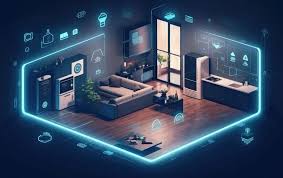



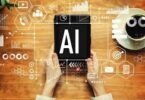
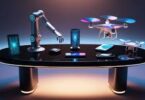
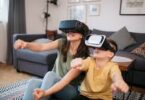
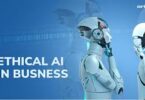
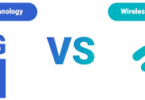
Leave a Comment